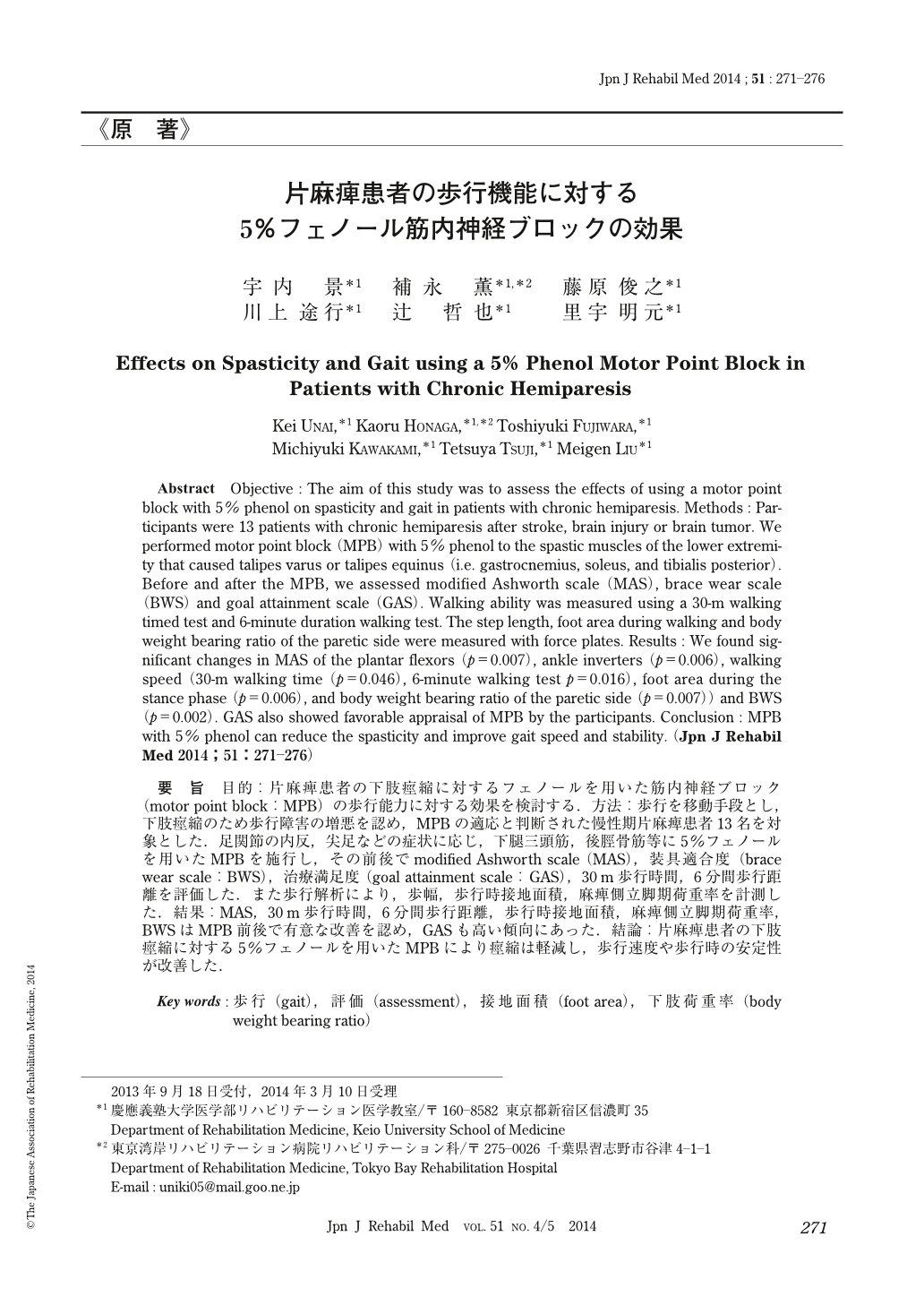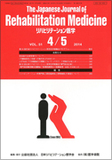Japanese
English
- 販売していません
- Abstract 文献概要
- 1ページ目 Look Inside
- 参考文献 Reference
要旨 目的:片麻痺患者の下肢痙縮に対するフェノールを用いた筋内神経ブロック(motor point block:MPB)の歩行能力に対する効果を検討する.方法:歩行を移動手段とし,下肢痙縮のため歩行障害の増悪を認め,MPBの適応と判断された慢性期片麻痺患者13名を対象とした.足関節の内反,尖足などの症状に応じ,下腿三頭筋,後脛骨筋等に5%フェノールを用いたMPBを施行し,その前後でmodified Ashworth scale(MAS),装具適合度(brace wear scale:BWS),治療満足度(goal attainment scale:GAS),30m歩行時間,6分間歩行距離を評価した.また歩行解析により,歩幅,歩行時接地面積,麻痺側立脚期荷重率を計測した.結果:MAS,30m歩行時間,6分間歩行距離,歩行時接地面積,麻痺側立脚期荷重率,BWSはMPB前後で有意な改善を認め,GASも高い傾向にあった.結論:片麻痺患者の下肢痙縮に対する5%フェノールを用いたMPBにより痙縮は軽減し,歩行速度や歩行時の安定性が改善した.
Abstract Objective : The aim of this study was to assess the effects of using a motor point block with 5% phenol on spasticity and gait in patients with chronic hemiparesis. Methods : Participants were 13 patients with chronic hemiparesis after stroke, brain injury or brain tumor. We performed motor point block (MPB) with 5% phenol to the spastic muscles of the lower extremity that caused talipes varus or talipes equinus (i.e. gastrocnemius, soleus, and tibialis posterior). Before and after the MPB, we assessed modified Ashworth scale (MAS), brace wear scale (BWS) and goal attainment scale (GAS). Walking ability was measured using a 30-m walking timed test and 6-minute duration walking test. The step length, foot area during walking and body weight bearing ratio of the paretic side were measured with force plates. Results : We found significant changes in MAS of the plantar flexors (p=0.007), ankle inverters (p=0.006), walking speed (30-m walking time (p=0.046), 6-minute walking test p=0.016), foot area during the stance phase (p=0.006), and body weight bearing ratio of the paretic side (p=0.007)) and BWS (p=0.002). GAS also showed favorable appraisal of MPB by the participants. Conclusion : MPB with 5% phenol can reduce the spasticity and improve gait speed and stability.

Copyright © 2014, The Japanese Association of Rehabilitation Medicine. All rights reserved.


